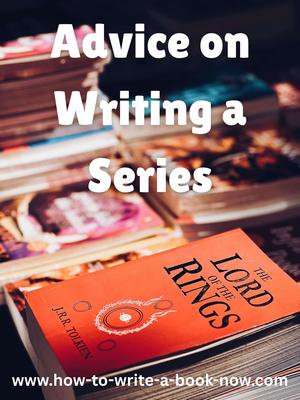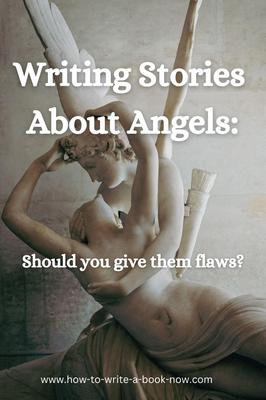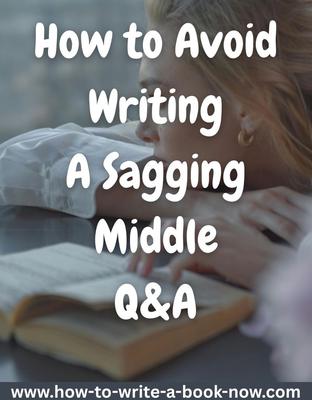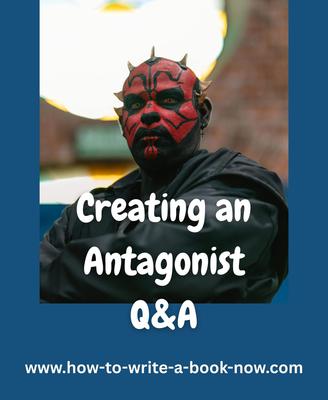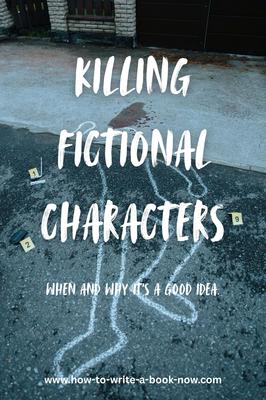How to Write a Series
By Glen C. Strathy
Why should you want to write a series? I can think of four reasons off the top of my head...
1. Because you like series. Lots of beginning writers begin with an idea for a series because they love reading series, or that just happens to be the first idea that truly grabs them. There's nothing wrong with that. You have to write what you love. So you may begin your creative writing endeavors wanting to write a series.
2. To make more money.
Writing a popular series is usually more profitable for a writer than writing a number of standalone books. People will usually buy more of something they like before they take a chance on something unknown. If they read the first book in a series and like it, they will want to buy the rest of the series. In addition, many people have a "collector" or "completionist" mindset. Once they have acquired most books in a series, they want to acquire the rest, so they can display a complete set on their bookshelf.
3. To make subsequent novels easier to write.
If you want to make a living as a writer, it helps to be prolific. If you can write and sell one book a year, you can build a readership and a stream of royalties. One book a year may not sound like much to a layman, but it can be challenging, so shortcuts help. And the advantage of writing a series is that much of the thought you put into developing characters and a story world can be used in more than book, saving you some time.
4. To meet a publisher's request.
Let's say you publish a novel, and it sells well. Fantastic! But then the publisher offers you a contract for two more books in order to make a trilogy. Naturally, you say "yes!" But when you sit down to write the second book, you realize that your main character's story, the inner conflict that made them interesting, was fully resolved in the first book. You have no idea what to do with this character now. Plus, you may now have a deadline, which you didn't have when writing the first book. So you have less time to develop the best new arc for your character.
As readers, we have all come across series in which the first book was much better than the sequel. I suspect this happens when the author wrote the first book with no expectation that it would become a series. The sequel was then a rushed job.
So if you are writing a novel in a genre where series are common -- such as Mystery, Romance,
Fantasy, Science Fiction, Adventure, or Thriller. It may make sense for you to write your first standalone novel in a way that leaves the door open for sequels.
So let's consider some of the many types of series that exist, and how you can be prepared to write a series, should you have the desire and the opportunity.
To Write a Series, First Consider What Will Connect the Books
Put simply, a series is three or more books that are linked by something other than being written by the same author. The links are common elements that appeal to a certain group of readers and give them a reason to buy all the books in the series. Some series are only loosely connected -- connected with a limited number of elements. Other series are tightly connected by many elements. Generally, the more connections, the more the reader who likes one book will want to buy the rest. However, even a very loose series can be very effective at building a readership.
For instance, a very loose series is the Goosebumps series of children's books by R. L. Stine. With a few exceptions, these books are about different characters and take place in different settings. The stories are unrelated. There is no series plot or character arcs that run through multiple books. What makes Goosebumps a series (apart from the common author and the series title) is the fact that they are in the same genre (Horror/Thriller), target the same demographic (children), and are written in a similar style.
The advantages to writing a loose series like Goosebumps are that:
1. Each book provides a complete and satisfying story on its own.
2. It doesn't matter what order the books are read in. A reader can pick up any book in the series and read it, without having read any of the previous books. And they don't need to read the next book to find out how the story continues.
3. You can write an unlimited number of books for the series, because there is no reason the series ever has to end. As long as the books keep selling and you have the desire to write more, you can keep it going.
Book Series in Various Genres (Some Mentioned in This Article)
(As an amazon associate, this site earns from qualifying purchases made through links to books mentioned on this page...)
Series vs. Multi-Volume Novels
At the other end of the scale are very tight series like J.R.R.
Tolkien's The Lord of the Rings or Kelly
Armstrong's YA werewolf series, The Darkest Powers.
These books are sold as trilogies, but really they are more like
multi-volume novels, because none of the individual books stands on its
own. There is an overarching story that starts in the first book and concludes in the last. Character and relationship arcs may begin in one book and develop throughout the series.
When the first book of The Lord of the Rings,
The Fellowship of the Ring, was published, many readers did
not know it was the first part of a trilogy and were disappointed to
find the book ends abruptly, at a point where the story is completely
unresolved. Same with the first book of The Darkest Powers,
The Awakening. The first book resolves nothing and you must read the entire trilogy to get a satisfying conclusion.
A tight series must also be read in a particular order. The first book is a setup, in which characters are introduced, plotlines are established, and the reader becomes familiar with the story world. If you start by reading the last or even the middle book in such a series, you will not have a satisfying experience. Nothing will make sense. You won't know who the characters are, what has happened so far, or why anything matters. And if you then go back and read the first book, it will be spoiled because you already know the ending.
On the other hand, the advantages to writing a tight series are that...
1. A reader who likes the first book will feel compelled to read the rest of the series right away, because they will want to find out how the story ends.
2. A reader whose friend tells them, "the fourth book is really great, but you have to have been following the series to appreciate it," may go out and buy all four books at once, to get the whole story.
3. Some readers like a series that requires only a limited commitment. They might be willing to read a 3-4 book series, knowing that's there is a definite end end, whereas they might balk at starting a book series that already consists of over five books with no end in sight. Tight series are usually planned with the last book in mind.
Between very loose and very tight series are many other types. For instance, you may write a Fantasy series in which the stories are all unrelated, except for the fact that they take place in the same fictional world.
In Romance or Women's Fiction, it is common to have a series of books that feature the same group of characters, such as a circle of friends or people who live in the same town. However, each book will have a different main character, and the main character of one book will likely be a supporting character in the others.
It's also common to
write a series in which the main character and the story world are the
same in every book, but the stories are otherwise unrelated. Many
mystery or thriller series work this way, such as Agatha' Christie's
mystery novels about Hercule Poirot or Lee Child's thrillers about Jack
Reacher. Readers buy the books to see the main character go on different adventures or tackle different problems, and each book is has a separate plot. Sometimes the personal life of the main
character evolves a lot over the course of the series, and sometimes not so much.
So when you sit down to write a series, you should have a strong sense of how the books will be connected. What will make readers of one book will want to buy the rest? Will there be ...
- An overarching plot that spans all the books in the series?
- Mysteries from the first book that need to be answered?
- An appealing main character readers want to go on more adventures with?
- A group of characters whose lives readers want to follow?
- Relationships that readers want to see grow and deepen?
- An intriguing story world that readers want to explore more of?
- A style of storytelling the readers find enjoyable?
- Or perhaps a combination of several of these things?
The Best Balance Between Tight and Loose Series
A good example of a series that is both tight and loose, and therefore offers the best of both worlds, is the Harry Potter series by J. K. Rowling.
Each of the seven books in the series offers a complete story on its own. So someone who reads the first book isn't left frustrated because they don't know how the story ends. This was especially important when the first book, Harry Potter and the Philosopher's Stone, was initially published and no one knew if it would be successful enough to ever have sequels. In such a situation, neither the writer nor the publisher would want readers left frustrated by an unfinished story. (With a tight trilogy, the publisher pretty much has to commit to publishing the entire series at once, which is risky -- especially with a new writer.)
At the same time, each of the Harry Potter books is also one act in a much longer story that unfolds throughout the series. In fact, Rowling had all seven books mostly planned before the first book was sold. This allowed her to plant small details in the early books whose importance would be revealed later in the series.
(To take a small example, in Harry Potter and the Philosopher's Stone, Ron's first attempt to do magic is a spell intended to turn his pet rat yellow. It doesn't work, and readers may assume that is because Ron hasn't learned enough magic yet. Later, in Harry Potter and the Prisoner of Azkaban, readers discover the real reason the spell didn't work is because Ron's rat isn't actually a rat.)
The trick is to write a series that achieves a balance between looseness and tightness. You want to give readers a complete story in each book, which gives immediate satisfaction, while at the same building on a story that isn't really complete until the last book, so the reader fels compelled to buy the rest of the series.
One way to do this is to think of each book in a series as one act of the overarching story. This works because story structure is recursive. The same structure that applies to an overall story can apply to individual acts.
For instance (and I apologize if you aren't a science fiction film fan), the original Star Wars movie, now called Star Wars Episode Four: A New Hope works quite well as a self-contained story about a group of rebels who manage to destroy a superweapon before it could be used against them. It ends with the story problem resolved. The weapon has been destroyed. The rebel base is safe. And the heroes get medals for their acts of courage.
At the same time, the movie is just act one in a much bigger story that unfolds across three movies and looks something like this....
Act One: Setup (A New Hope)
A fledging rebellion, aided by Luke Skywalker, a new Jedi trainee, destroys Emperor Palpatine's secret weapon, the Death Star.
Act Two: Complication (The Empire Strikes Back)
The Imperial troops attack the rebel base, scattering the heroes.
Act Three: Move to Crisis
(The Empire Strikes Back)
Darth Vader tries to recruit Luke to the dark side, revealing he is Luke's father.
Act Four: Move to Resolution (The Return of the Jedi)
Luke turns tables on his father, rescuing him from the dark side and together they defeat Emperor Palpatine before he can crush the rebellion with a new Death Star.
As with most trilogies, the middle two acts of the overarching story of Star Wars are combined, so that the second movie ends at the crisis. (Of course, you might choose to write a series in which each of the four acts is a separate book, making your book series a tetralogy rather than a trilogy.)
At any rate, I could summarize the overarching story of entire Star Wars trilogy in one sentence as:
Emperor Palpatine's reign ends when a new Jedi knight, Luke Skywalker emerges to avenge his father's fall to the dark side.
If you want to write a series using this approach, you will need to think about how your first book could be both a complete story and the first act of a much longer story, and how that overarching story will have a solid, four-part dramatic structure. You would give your first book a satisfying ending, but an ending that would also show your main character entering a new phase of their life, making readers curious about what will happen next for them. You might leave some mysteries unanswered, so you can explore them in later books.
You might also subdivide acts one and two further, creating additional books within the series, as long as they fit into the overarching story.
What's important is that each book...
a) Feels like a complete story and
b) Advances overall series plot
The second last book will end with the major crisis of the series, so that readers who have been following the story will feel compelled to get the last book to get the exciting ending to the entire series.
To Write a Series Effectively, Delay Your Main Character's Growth
One difference between writing standalone books and writing a series is that the main character of a standalone book will often grow and become a different person over the course of a single book. They will have an inner conflict that they can only resolve by changing, usually in a moment of personal crisis, so they are left older and wiser in the end. Whatever "chip on their shoulder" or "hole in their heart" they began the story with will be gone.
On the other hand, the main character of a series will generally not change over the course of a single book. More likely, they will resolve any personal crisis by remaining steadfast or doubling down on whatever emotional wound drivers them. They will refuse to change.
The reason series main characters stay steadfast is because, in a loose series, readers expect to see the same main character who they like in every book. The main character and their personality are what connect the books, which otherwise may be about unrelated stories. Such a series is often described as "episodic," because each book is about a standalone episode in the main character's life.
If your main character has an internal arc in the first book that leaves them a changed person by the end, then they will not be the same person at the start of the next book. So readers who like the character and want more of them may be disappointed.
This is why, for example, in the James Bond series by Ian Fleming, Bond can never have a happy ending. Even if he seems to find love at the end of one story, he cannot marry, settle down, and raise children. He cannot give up the spy game and retire. To do so would be to give up the quality that makes readers keep reading the series. Readers turn to a James Bond book for another adventure about the character they know -- a cold, focused hero who does what he must to accomplish a dangerous mission. If instead they found a Bond who is constantly distracted by worrying about his wife and children, or who enjoys life too much to go on dangerous missions, readers would be disappointed. Bond would not be the character they came to love. For this reason, even when Bond seems to find true love, it is quickly taken away from him. A book in which he permanently changes would be the end of the series.
Even in a series that is not episodic, any change in the main character should be postponed until the last book. At the very least, it cannot be allowed to ruin the character for the sequel. For instance, in The Hunger Games series by Suzanne Collins, Katniss appears at first to change over the course of the first book. She goes from being someone who hides and suppresses her feelings for the sake of survival into someone who achieves victory by expressing and acting on her true feelings. However, at the very end of the first book, she backslides on this change. Realizing that she will be even more closely watched from now on, she decides she must keep her real feelings more heavily guarded than before. This backsliding is necessary so that, at the start of the second book, Katniss is essentially the same character she was in the first book -- because that's the character readers want more of.
The lesson here is that, if you want to write a series in which the main character changes, you must make sure they do not change until the last book. In fact, this change will be what signals that their story has finally come to a close.
How to Write a Series When The First Book is Already Finished
Let's suppose you wrote a novel with no intention of it becoming a series. But now, perhaps because the first book sold well, or you have just fallen in love with the main character, or the story world, or one of the supporting characters, you have decided to write a series of novels using elements from the first book.
If it's the story world you want to revisit...
In certain genres, such as Fantasy and Science Fiction, world-building is very important. Many readers love to explore a complex and detailed imaginary story world through the course of a novel. Writers love creating such worlds as well, and often plan out more of the story world than they actually use in the novel.
So why waste all that extra planning? Why not use the thought you put into your story world to write a series of stories involving involving different characters within that world? You can visit different parts of the world in different books, tell stories set in different time periods , or both. Readers who liked the first book will be happy to revisit your story world, and readers who haven't read the first book won't mind, because they are getting a standalone story... and maybe they will go buy the first book after reading the second.
If you want to use a supporting character from your first book as the main character of the second....
As with the previous example, writing a story about a supporting character from your first book allows you to make more use of all the world-building you did for the first book.
Of course, you can't just choose any supporting character to be the lead in a sequel. But sometimes a supporting character will appear in a story you are working on who is a lot more intriguing that they need to be. You may find yourself so interested in the supporting character that you want to spend more time writing about them than would be appropriate in a novel about a different main character. So you make notes about the supporting character's background or parts of their life that don't actually appear in the novel, saving it for later.
If you have such a supporting character, whose story demands to be told, you can certainly make them the main character of their own novel. You would develop and plan their story just as if you were creating a novel from scratch, except that perhaps some other characters from your first novel will make an appearance.
You may choose to write a series of novels about a circle of friends -- perhaps exploring each character's backstory in a separate book. Or you could have the same group of characters go on a number of adventures, making a different character the focus of each story. There are many possibilities. The key is to make the characters and the story world appealing so that readers will want to read the entire series.
If you want to write multiple stories about the same main character...
If you have a main character you love writing about, it makes sense to write a sequel about them -- or perhaps multiple sequels. You may want to write a series about that character. Again, you can reuse some of the world-building, ideas, and minor characters from the first book.
You will have to decide how loose or tight you want your series to be, and that may depend on whether your main character changed substantially at the end of the first book. How "finished" does their story feel? Do you want to take away their happy ending (assuming they had one) by plunging them into a situation as difficult as dire as they were in before? If they found their true love at the end of the first book, do you want that relationship to fail, so you can have them begin a romance plot with someone else?
If you don't want to take away your character's happy ending... if you truly feel their story is finished... one option may be to write a prequel. Perhaps you can tell the story of how they came to be the person they are at the start of the first book. Perhaps you can send them on a series of adventures across many stories, all of which take place earlier in their life.
But if that is not possible... if you have told the story of your character's life in the first book, from birth to the point where they achieve their goal and their "happy ever after," then you will need a different approach.
You may have to give your character both a new external goal (a story problem or plot objective), and you will have to give them a new inner conflict. You may need to imagine the growth they achieved in the first book merely set the stage for a new challenge, which you will present in the second book, that may become the basis of an overarching plot that spans multiple books.
At the same time you will need to make sure your character retains enough of who they were in the first book that they remain the same character your readers came to love.
Finally, look for more tie-ins.
It may be that you have other elements in the first book that could be developed or expanded on in sequels. Was there a hint of a backstory that could be made into a prequel? Was there something unexplained that you could retroactively decide foreshadows something in the future? Was there a minor character whose place of origin could become the setting for another adventure?
Readers often enjoy learning more about a story world they like, as long as it is plausible and consistent. They like seeing connections between things, because connections can make the series more meaningful. So look for opportunities to create those connections.
- Home
- Writing Series
























